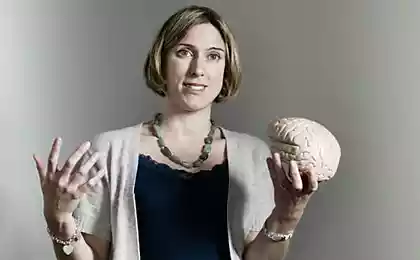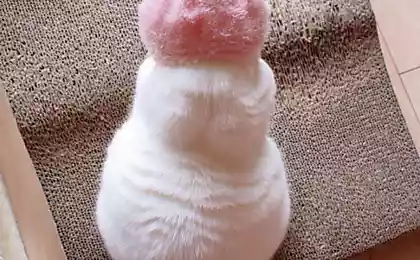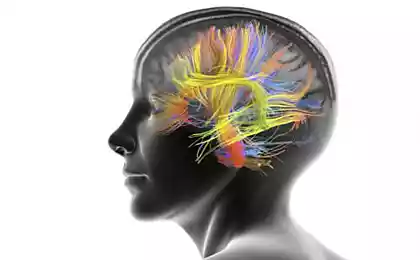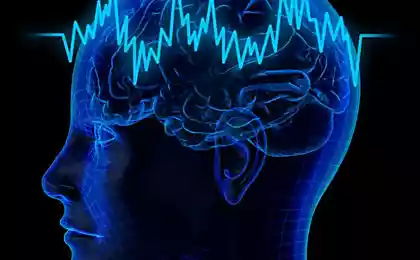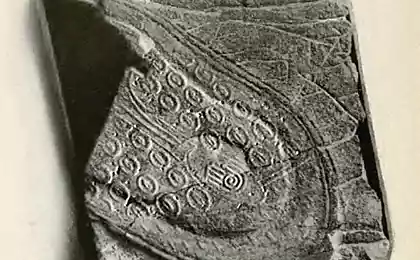507
Scanning the physical structure of the brain establishes the identity of the person with accuracy close to 100%

Researchers have found the "fingerprints" of the white matter of the human brain. Using the method of diffusion MRI, they have modeled the detailed map of neural connections ever created. Scientists have confirmed that structural connections in the brain are unique to each individual. The study revealed that the structure of the nervous system, it is possible to identify a person with accuracy close to 100%
A team of scientists led by Timothy Vershinina, associate Professor of psychology at the University Carnegie Mellon has studied 699 maps of neural connections – the connectome. Connectomes show the detailed connections in the area of the Central nervous system consisting of axons. All axons in this area was coated white, so it is called white matter.
The architecture of the white matter is an individual thing, so it is suitable to determine differences between the "fingerprints" of the brain. The structure of neural connections is determined in part by genetic factors, but most of it changes under the influence of time.
Specific features of the brain, which helps to identify a person are encoded by a unique pattern of connections between neurons. To compare the two connectome different people and to Express that difference in any quantitative indicator is a rather difficult task. Analysis requires accurate maps of the architecture of white matter. To build the most detailed map of the neural connections in their study, the researchers used data from diffusion MRI. It measures the diffusion of water molecules along the fibers of white matter in the brain. This method gives scientists the opportunity to trace the direction of the axons and to determine the structure of neural connections from one section to another, but it is not precise enough. Therefore, the researchers rejected it in favor of the local connectome.
Local connect is the degree of connectivity between adjacent elements in the bundles of white matter. It is measured by the diffusion tensor of water. If we combine these measurements will produce a vector that describes the set of features corresponding to connectome particular person.
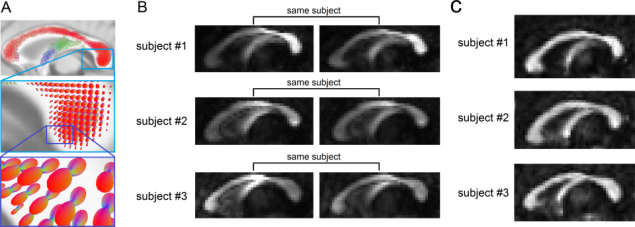
The uniqueness of the local structure connectome: A — distribution function of the spins showing diffusio liquid; — demonstration of differences of each object using fractional anisotropy; C — definition of uniqueness by using the diffusion coefficient.
To evaluate the effectiveness of the approach, the scientists were able, using four datasets of repeated scans they received in different time intervals. This is the main feature of the study, scientists analyzed stored once information. Then they found out whether it is possible to determine the identity of the human connectome. To do this, they compared the information with fingerprints. Subsequent analysis showed that local connectome possible to determine the quantitative similarity between genetically related people.
Measurements have shown that the connectome each person is unique, like fingerprints. This detailed map can be used for identification along with fingerprinting, and 17 thousand of the identification tests confirmed this assumption. With almost 100% accuracy they can determine if two connectome same person or not. The probability of error of this technology is a thousand times less than that of fingerprinting. But even this method does not guarantee.

Connectomes homozygous (MZ), dizygotic (DZ) twins and siblings (Siblings)
The connectome can be used as a marker of the phenotype of the person. Scientists have discovered that identical twins homozygous 12,51% of the structural relationships. Heterozygous common part is even less, only 5.4%. Brothers and sisters, born one by one, the resemblance is of 4.51%. Over time, this share decreases on average, by 12.79% every 100 days.

Similarities and differences between twins and siblings
"The most exciting part of this study is that we can now apply the new method to data that was previously gathered, and identify new information that no one interpreted. Higher precision of this method allows us to reliably determine how genetic factors and features of the environment over time affect the human brain. Thus we can better understand the function and dysfunction of the brain," says Fan Chen, associate Professor of neurological surgery at the University of Pittsburgh and one of the authors of the study.
Thus we can see how the events connect people, affect the brain. The method of diffusion MRI gives researchers useful biomarkers. They will help to determine how diseases, environment, hereditary and social factors affect the brain and its changes in time. This means that all the troubles of life one way or another affect the relationship of the human brain. The unique "fingerprints" of the brain comparable with fingerprints and it is possible that someday the map of neurons complement or completely replace fingerprinting.
Currently, scientists are increasingly finding the application of MRI in various fields. In their work, scientists from Pennsylvania state University compared the accuracy of fMRI and polygraph in the definition of a lie. It turned out that even neurologists have no experience in lie detection, the chance to detect deception 24% higher than that of professional polygraph examiners. In the spring, a group of neuroscientists from the University of California at Berkeley has created a "semantic Atlas" of the cerebral cortex. It shows which areas of the brain responsible for the processing of words associated with numbers, visual images, geographical objects, emotions and other factors. In addition, the Atlas can roughly understand what people are reading and thinking about.
Scientific work published in the journal PLoS Computational Biology 15 Nov 2016
DOI: 10.1371/journal.pcbi.1005203
Source: geektimes.ru/post/282832/
Mackerel tastes like red fish: the secret in a special marinade!
The drought in California struck a third of the forest died 102 million trees

